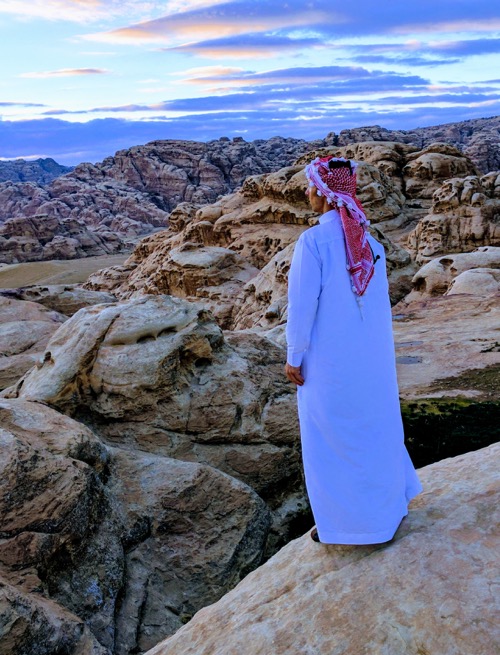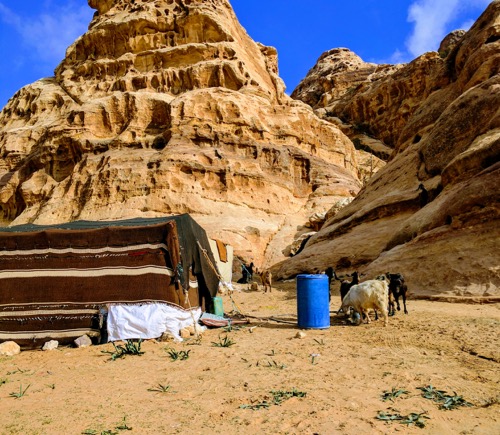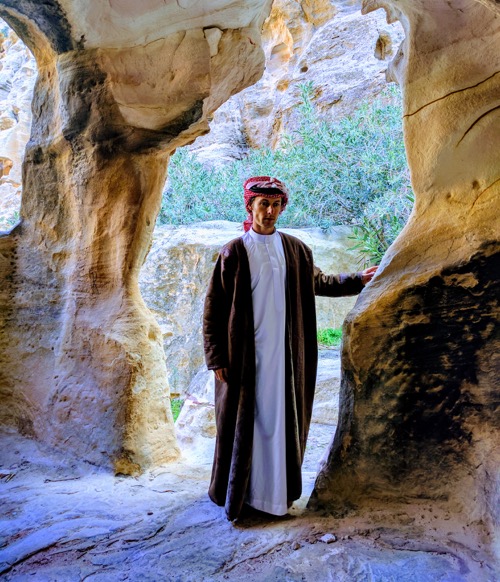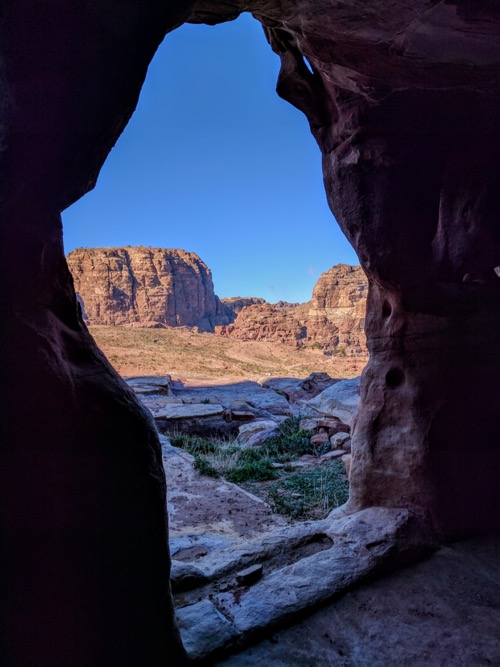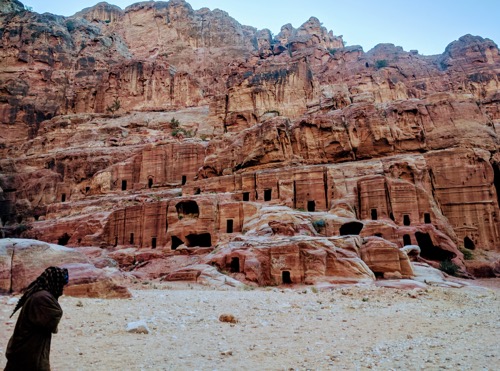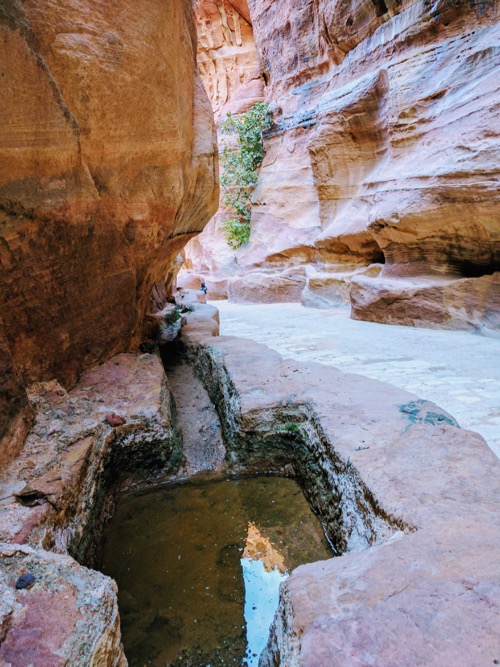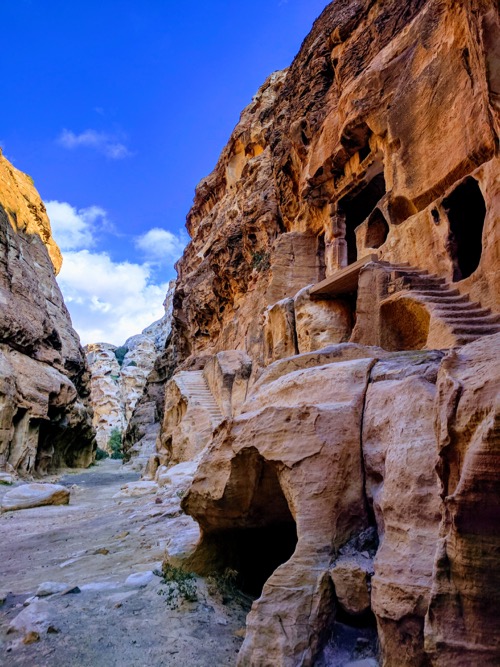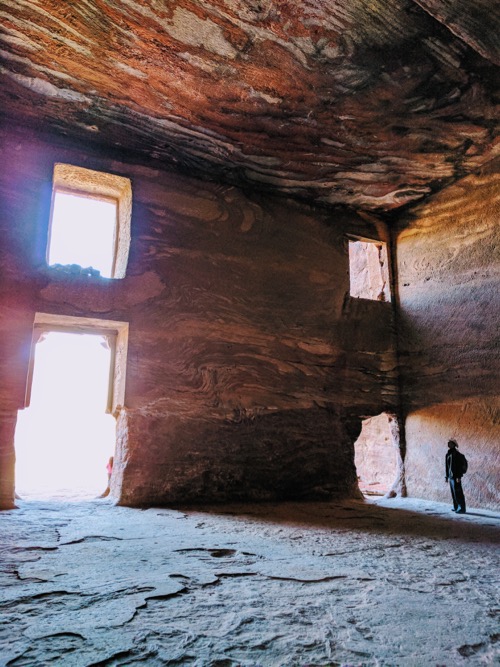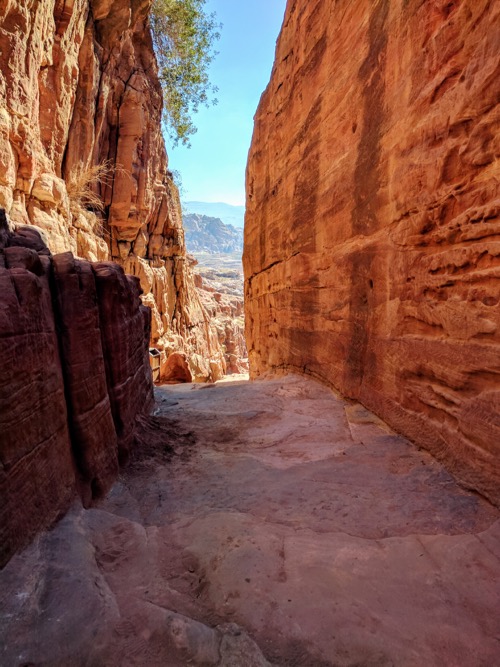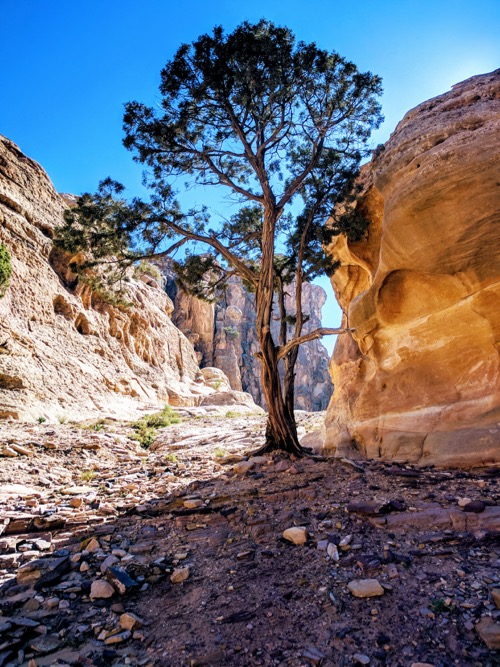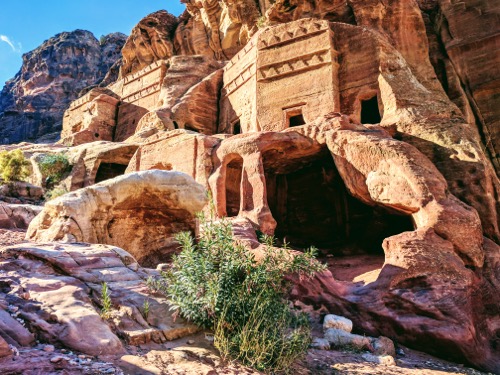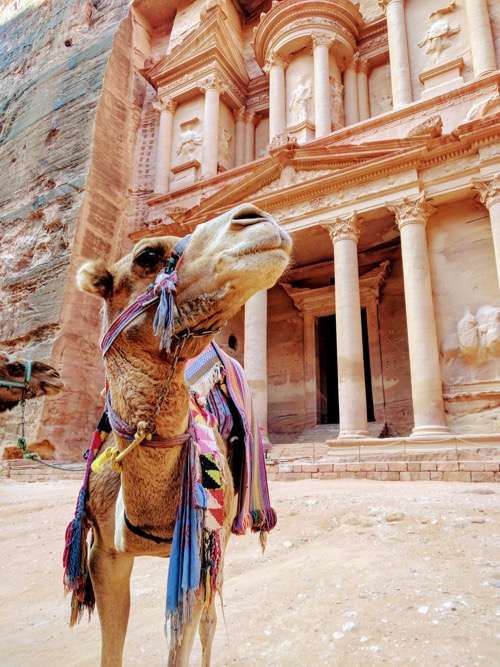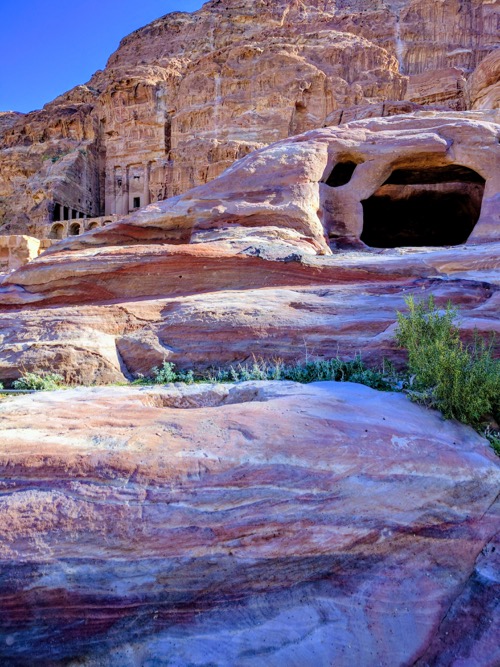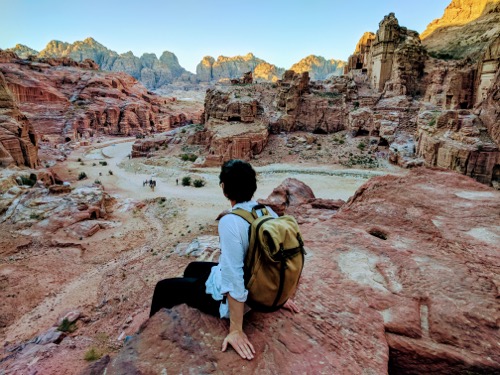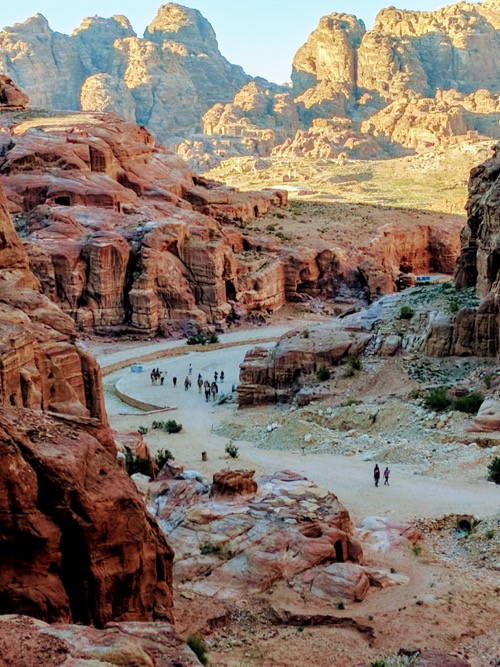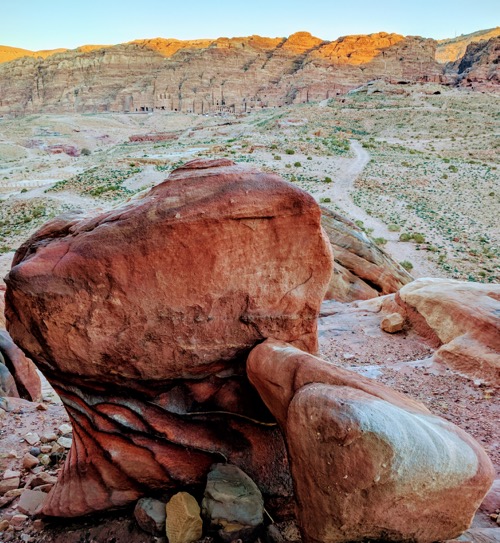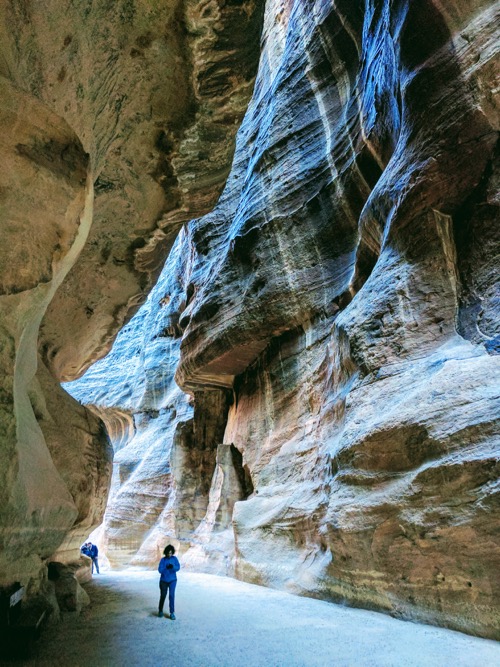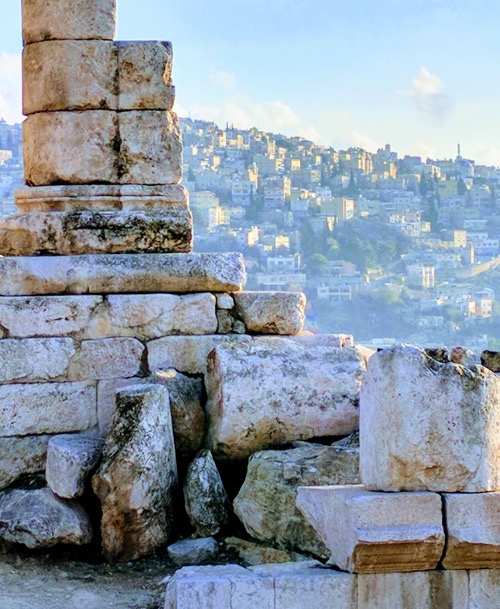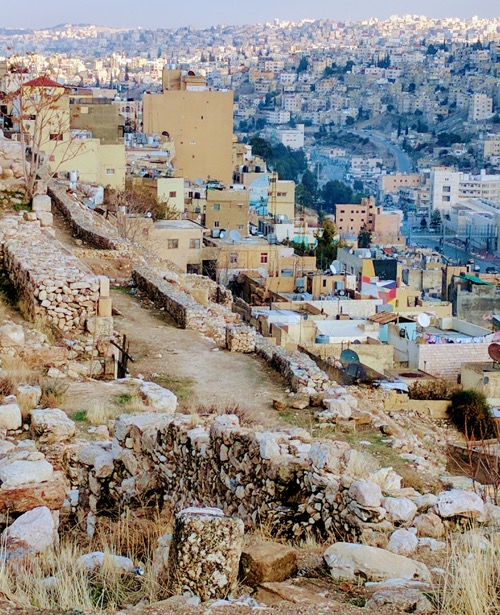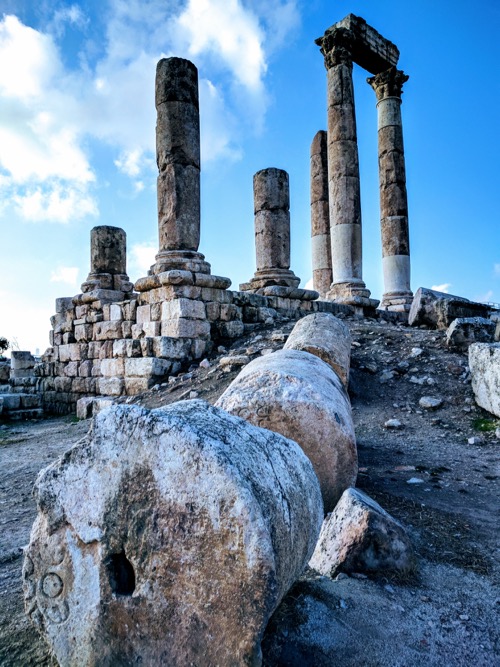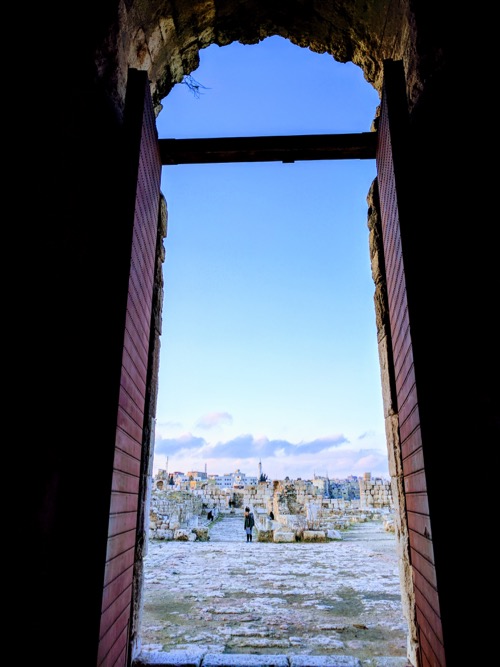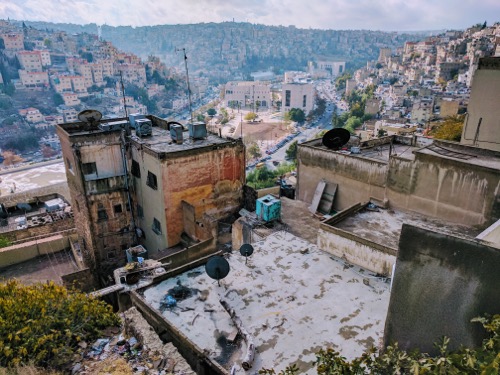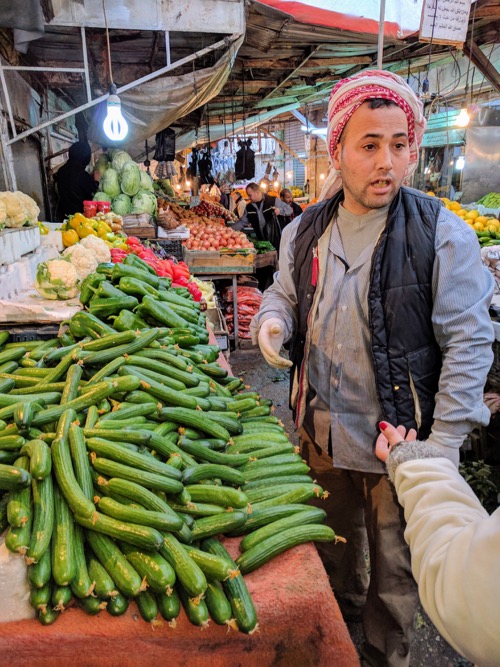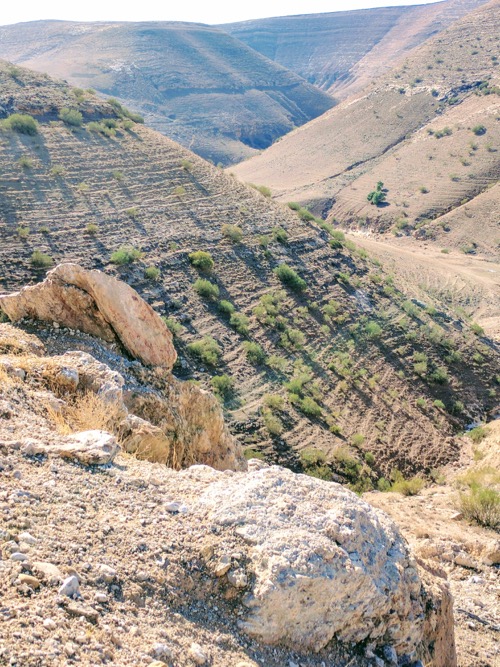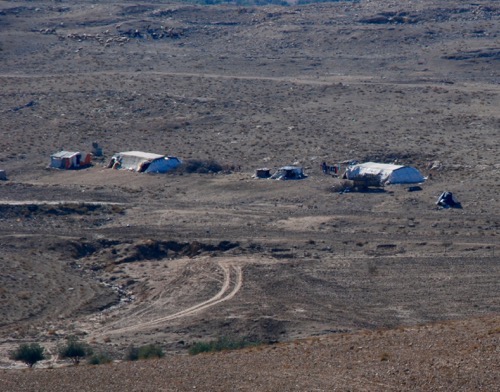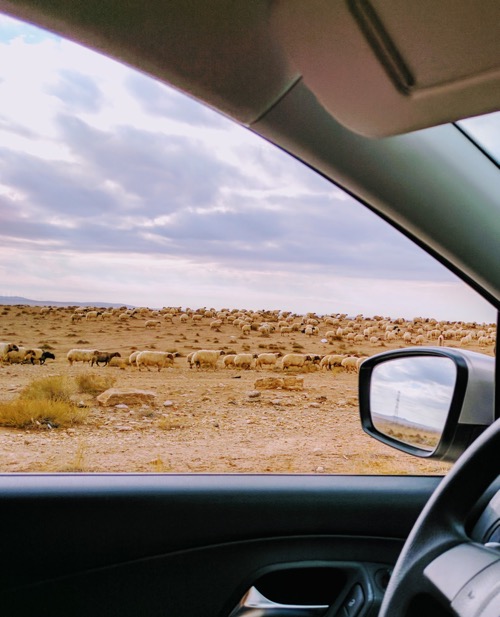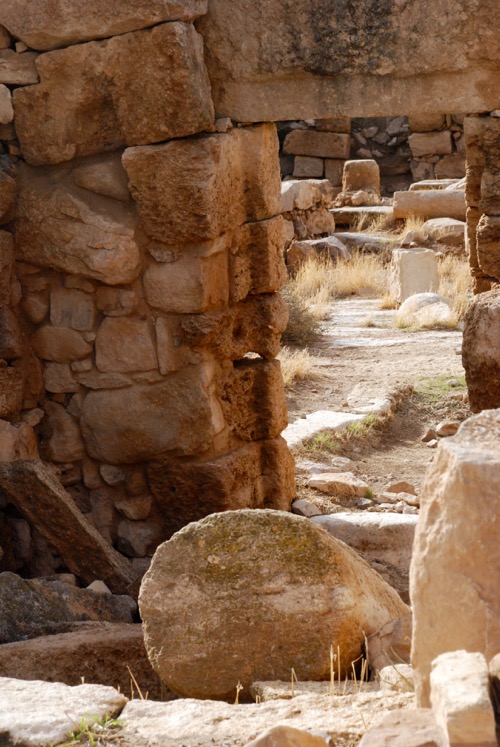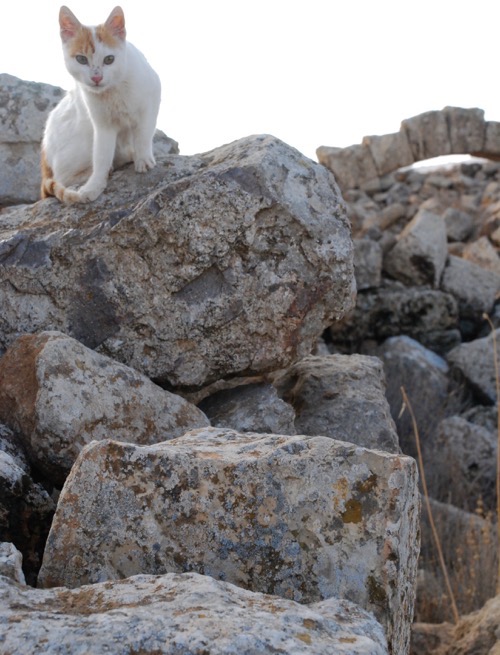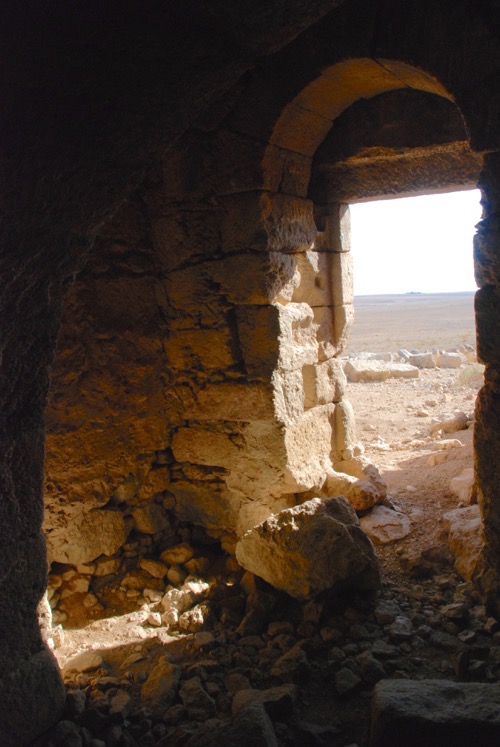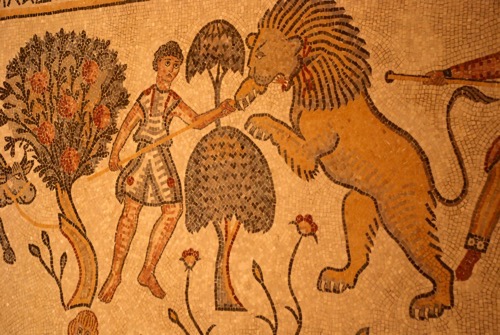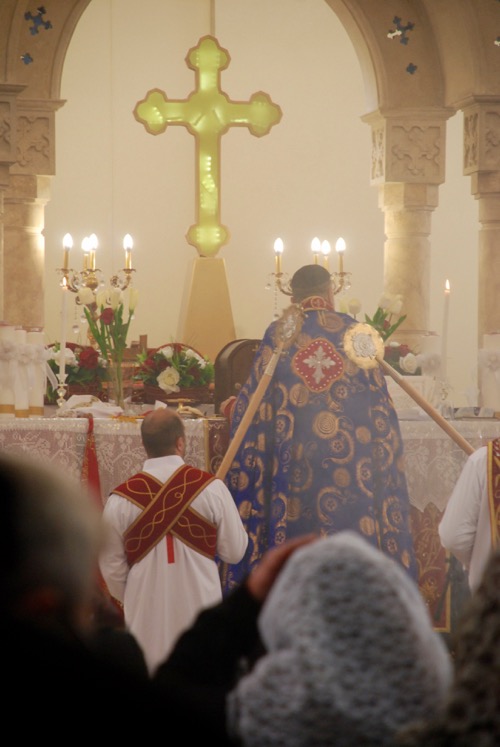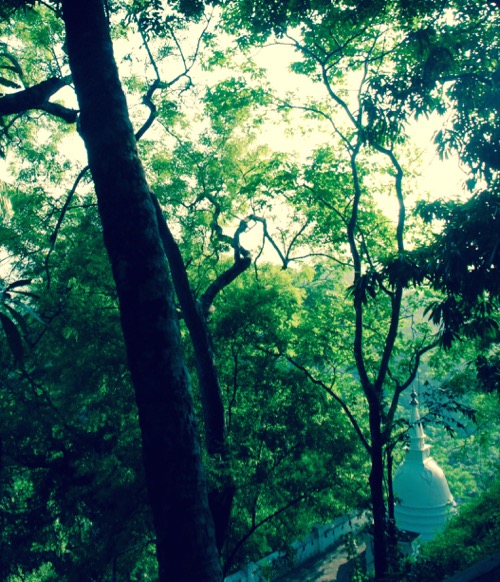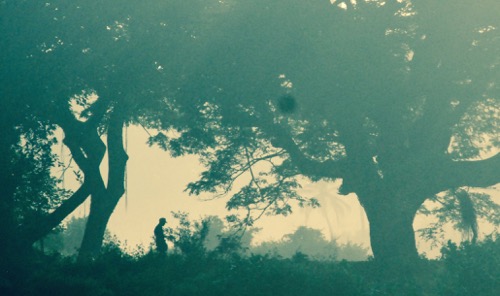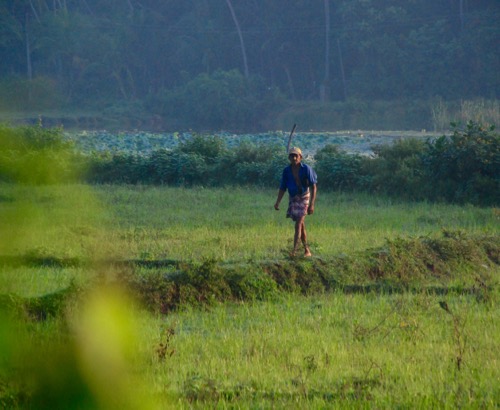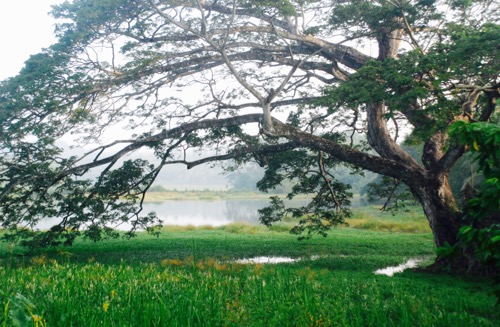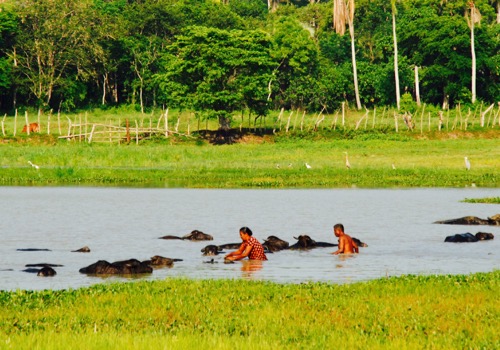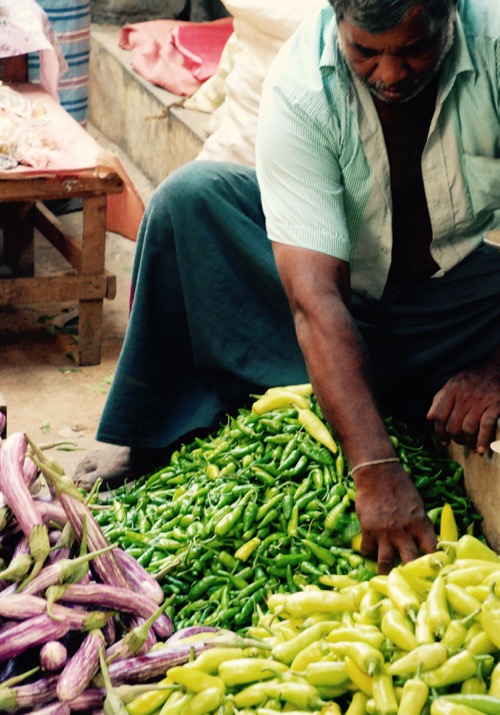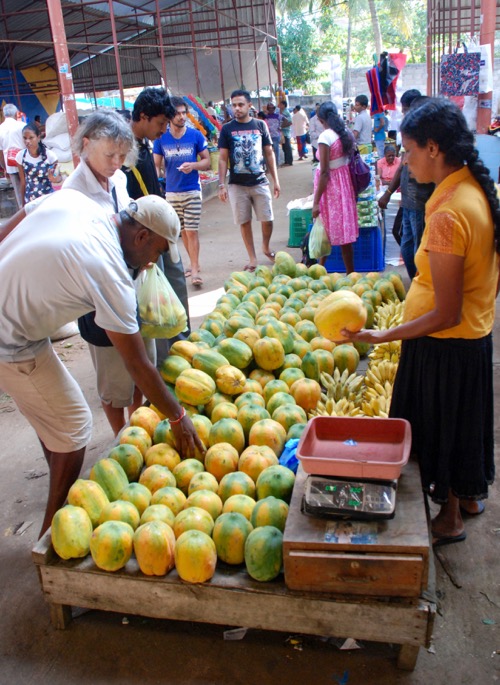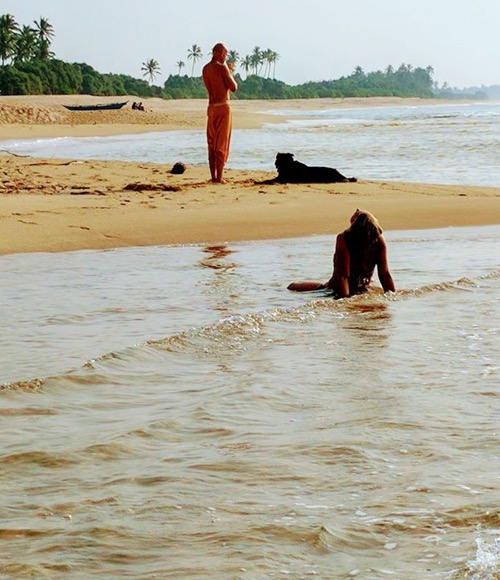Mountains entered.
Size incalculable.
Mystical weight and folds of stone.
Still blue air.
The first day in Petra we headed out to Little Petra, a few kms away from the more famous site, where a narrow canyon is filled with Nabatean caves, carved around 2000 years ago. On the way we took a dirt track down a valley through the ranges of stone mountains and passed Bedu tents in secluded niches, encircled by rock. Flocks of brown and white sheep and errant goats.
Caves, several still inhabited, that have the vantage and vista of feudal fortresses.
Stepping into the shade of a cave in Little Petra I was impressed how this is a land both wild and yet accommodating of humans.
The next day we entered the main site at Petra.
Standing inside the caves and looking out I imagined what, around 2000 years ago, the men and women who lived here saw and may have felt about their surroundings – the almost biblical scale of the mountain ranges and rocky canyons that were their daily backdrop.
Such surroundings couldn’t but help elevate their days above the mundane.
Water cisterns and carved channels in the rocks are evidence of how good the Nabateans were at harvesting water, water that would have made their desert fortress a garden paradise.
Bedu people used to live in Petra and the Jordanian government moved them out, building free, if not very pretty, housing for them a couple of kms from Petra. For this reason nobody is very strict in regulating what rude and swaggering Bedu teenagers are doing inside this UNESCO listed world heritage site. Unfortunately they are detracting from the experience of visitors to the site (who have paid $100 AU to get in), as they offer to sell trinkets and donkey rides with a badgering insistence that mars the peace of Petra. Their makeshift stalls have spread even up to the foot the Royal Tombs. I only worked out how to escape the touts and vendors by the second day – you need to go after three pm in winter and go to areas of Petra that are not listed in guide books.
Fortunately I did this, and found peace amongst the old tombs of Petra.
As I sat on a rock ledge and watched the sun set I saw Petra’s wide spaces and red sandstone cliffs and peaks, its warren of caves, its worn yet still glorious entrances into the mountain faces, and reflected on this place’s sense of having a mysterious history that we will never fully know or understand, but that which we will always feel awe in the presence of.
As I sat on the stone ledge and looked down over the ancient valley I thought ‘this must be one of the most beautiful sights I will ever see’. Those few minutes by myself looking down over the valley in the quiet of the evening are up there with the first few minutes of silence after I entered Ta Prom in Angkor early one morning in the Cambodian jungle in terms of providing me with a deeply touching and uplifting experience of place. Both places showing humanity’s signature accommodated in and by wild nature.
Later that evening around 5pm, almost all of the tourists had left the site.
To exit the site we took camels and a donkey out through the siq (canyon). Dusk was turning to darkness. The towering walls of the valley narrow to a crack in the stone.
We pass within.
I feel beneath me the long, loping gait of the camel. I see the camel in front of me flex its hindquarters with languid ease. The camels hold their heads tall and proud on long, mobile necks. I feel I am traveling into history. Pacing into a world that might have been an adventure undertaken 1000 years, or 2000 years, ago. I imagine in the darkening space, high above the ground, and yet far beneath the surface of the earth, that I am moving through the night to a nameless city. I am journeying on a camel train through a cleft in a stone mountain. The clop clop of the donkey beside us is all that can be heard in the gathering gloom. This experience made me more happy than many of the things I have done in my life.
